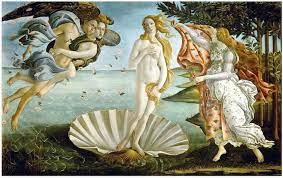Post Modern Blog
Postmodernism and the Deconstruction of Artistic Traditions
According to Lyotard (1984), the
postmodern age, which generally runs from the middle of the 20th century to the
present, is characterized by mistrust toward great stories, doubting traditional
cultural ideals, and a combination of high and low art. Postmodernism created a
wide variety of unique and frequently mismatched styles in the visual arts,
from the humorous appropriation of popular culture to the study of alternative
techniques of representation. This online exhibition, which focuses on six
pieces by Cindy Sherman, Jean-Michel Basquiat, and Jeff Koons, tries to
demonstrate the diversity and complexity of postmodern art. By carefully
analyzing these works, I will talk about how they interact with the themes
of identity. I will examine how these pieces address issues of identity,
adoption, and the collapse of artistic structures through an in-depth review of
the pieces, while also considering my own aesthetic responses to the pieces.
Artist 1: Cindy Sherman
American artist Cindy Sherman usually
creates photographic self-portraits in which she adopts several characters and
responsibilities. Her "Untitled Film Stills" series from 1977 to 1980
is regarded as one of the most recognizable works of postmodern art. With
reference to well-known filmic designs and styles, Sherman recreates patterns
from imaginary movies in this series (Molesworth, 2012). The paintings question
the idea of a secure, real self while also praising and criticizing the
position of women in popular culture.
1. In "Untitled Film Still
#21" from 1978, Sherman is portrayed as a stunning Hollywood starlet
wearing an evening gown and fur stole. The picture plays with the viewer's
notions of feminine and glamor while making a statement about how identities
are created.
2. In "Untitled Film Still
#35" from 1979, Sherman is depicted in a household environment while
holding a broom and donning an apron. This essay discusses the ways that women
have traditionally been kept in the home and criticizes the way that women are
portrayed in popular culture as quiet, submissive individuals.
Artist 2: Jean-Michel Basquiat
American artist Jean-Michel Basquiat,
who was of Haitian and Puerto Rican origin, became well-known in the 1980s for
his gritty, graffiti-inspired works of art. His interest in the breakdown and
reconstruction of cultural symbols is seen in the frequent combination of
symbolic, abstract, and text elements in his works (Saggese, 2014).
1. In "Untitled" (1981), a
head-like skull is encircled by a jumbled collection of marks, words, and
symbols. This work of art can be read as a reflection on the isolation and
violence that African Americans endure, as well as an assessment of the broken
character of postmodern identity.
2. The 1983 group photo
"Hollywood Africans" features Basquiat and two of his friends: the
artist Toxic and the musician Rammellzee. Black people have little
representation in the entertainment business, and the painting calls on the
audience to examine their own assumptions about race and identity.
Artist 3: Jeff Koons
American artist Jeff Koons is renowned
for his huge works of art that take common objects and symbols from popular
culture. His work frequently uses a cartoonish style, which challenges the
lines separating high art from low art (Koons, 2009).
1. The pop feeling and his pet
chimpanzee are shown in life-size ceramic sculpture titled "Michael
Jackson and Bubbles" from 1988. The work is a statement on the abuse of
art as well as a celebration and criticism of the culture of celebrities.
2. A artwork made of stainless steel
that resembles an inflated balloon animal is called "Balloon Dog
(Orange)" (1994-2000). This piece engages with the ideas of childhood
innocence and regret while also challenging the traditional conception of
sculpture as a solid and everlasting item.
Aesthetic Reaction:
Each of these pieces challenges our
stereotypes of what art ought to be and provokes a variety of feelings and
reactions. As seen in Basquiat's strong, emotive brushstrokes, Koons' glossy,
reflective surfaces, and Sherman's carefully staged compositions, the art
components of color, texture, and structure are used in striking ways. The positioning
of these pieces inside the online exhibition draws attention to the parallels
and differences between the various postmodernist approaches taken by the
artists. With pieces by Cindy Sherman, Jean-Michel Basquiat, and Jeff Koons,
this online exhibition provides a window into the diverse and colorful world of
postmodern art. These works challenge the viewer's stereotypes of art and
culture by addressing issues of identity, adoption, and the collapse of
artistic structures while offering a visually stunning and fascinating
experience.
References:
Koons, J. (2009). Jeff Koons:
Conversations with Norman Rosenthal. London: Thames & Hudson.
Lyotard, J. F. (1984). The Postmodern
Condition: A Report on Knowledge. Manchester: Manchester University Press.
Molesworth, H. (2012). This Will Have
Been: Art, Love & Politics in the 1980s. Chicago: Museum of Contemporary
Art Chicago.
Saggese, J. M. (2014). Reading Basquiat: Exploring Ambivalence in American Art. Oakland: University of California Press.








Comments
Post a Comment